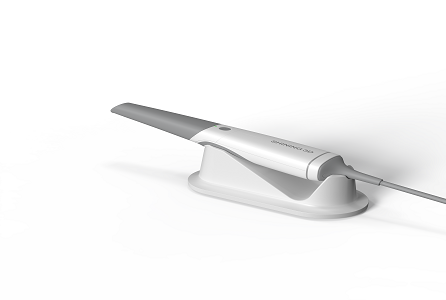For dental professionals exploring digital tools for their practice, the intraoral scanner has become one of the most practical and accessible solutions in recent years. At SHINING 3D DENTAL, we focus on providing scanning systems that support clinical routines without adding unnecessary complexity. This article introduces the basic functions of an intraoral scanner, what it captures, and how it fits into everyday dentistry.

What Is an Intraoral Scanner?
An intraoral scanner is a handheld device that captures 3D images of the inside of a patient’s mouth. Instead of using impression materials, the scanner uses a small camera to take thousands of pictures in seconds. These images are stitched together in real time to create a highly accurate digital model of the teeth and gums.
At SHINING 3D DENTAL, our scanners use intelligent scanning software that automatically recognizes structures and fills in missing data. This results in a complete digital impression that can be used for diagnosis, treatment planning, and lab communication.
What Does It Capture?
The scanner captures detailed surface data of teeth, soft tissue, and bite relationships. Depending on the scan path selected, it can be used for a full arch, quadrant, or specific region. The scan shows color images, which help with identifying margins, restoration areas, and adjacent structures.
SHINING 3D dental scanners provide real-time feedback during scanning. This helps ensure that the scan is complete and free of voids. The system also detects where additional scanning is needed, making it easier for the operator to capture clean data without guesswork.
Why Use an Intraoral Scanner?
One of the main benefits is patient comfort. Since the process is powderless and does not require impression trays, patients often find the experience quicker and more pleasant. The scanner is lightweight and easy to maneuver, making it easier for clinicians to reach all necessary areas.
For dental professionals, an intraoral scanner can improve how data is recorded and shared. Digital impressions reduce the chance of distortion and can be sent directly to dental labs or design software. This can help reduce turnaround times and minimize remakes.
How It Fits into a Daily Workflow
Using an intraoral scanner is not limited to complex cases. It can be applied to a variety of procedures including crown design, orthodontic aligners, implants, and diagnostic models. SHINING 3D DENTAL’s scanners include a user-friendly interface with clear visual guidance, so the learning curve remains minimal even for new users.
In addition, touchless control options help support hygiene protocols by allowing the user to interact with the software without physical contact. This feature is especially useful in multi-step procedures where cleanliness is critical.
Conclusion
An intraoral scanner from SHINING 3D DENTAL is designed to make digital dentistry more accessible, not more complicated. By capturing accurate data in a comfortable and efficient way, the scanner helps clinics streamline processes while maintaining a high standard of care. Whether you are new to digital tools or expanding your workflow, this technology offers a solid foundation for daily dental tasks.
 ENG
ENG








